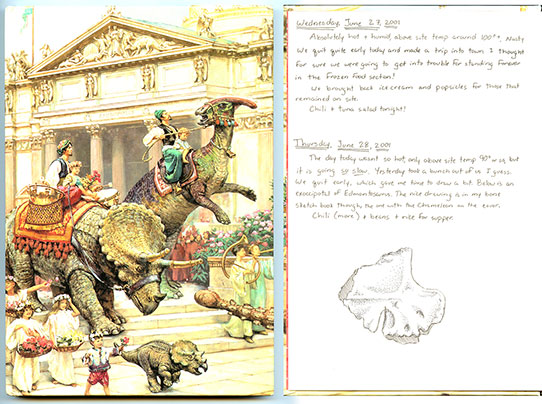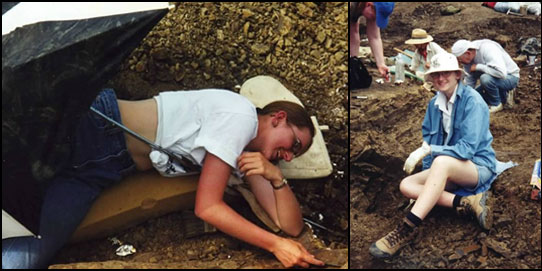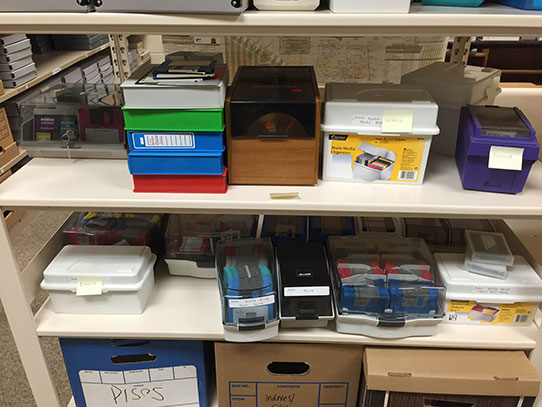Gotta Dig ‘Em All
Another series of bones are being slowly added to the State Fossil collection. Concordia College in Moorhead, MN, held one of the largest collections of Edmontosaurus (“duck-billed” dinosaur – same kind of animal as “Dakota the Dinomummy”) bones in the country. Dr. Ron Nellermoe, who recently retired from a position of teaching biology and geology at the school, worked on a quarry of Edmontosaurus in South Dakota for over ten years. During that time, thousands of fossils were collected, many with beautiful preservation. This collection of fossils is where I got my start – my real start – in paleontology.
I had spent the last five years preparing Green River Formation fossil fish from Wyoming, so I wasn’t totally new to the time and patience needed for fossils. It was the spring of 1998; my grandmother had spotted an ad in the local paper about a “communiversity” course being offered on dinosaurs and fossils. I wanted to jump at the chance, but I had already watched one opportunity vanish. Two years prior, my aunt let me know about a dig in Wyoming – BUT – you had to be 15 to go. I waited a year, only to find out the dig had shut down. Now at 16, I wanted more than anything to go on this dig, but we weren’t sure if they would allow a high school student along.
My family contacted the school, and thus Dr. Nellermoe. He wasn’t thrilled about the idea of a 16-year-old girl going along. -Somehow they convinced him and assured him that an adult would accompany me on site. I was in! The spring was spent volunteering in the paleontology lab, learning how to clean and identify bones, and reading every paleontological reference book I could. Summer finally hit, and I dove into digging. I pulled my weight, probably asked way too many questions, kept a journal, and soaked up as much as I could. Meanwhile my Mom painted the local landscape.

Pages from the first field journals Becky took at the Concordia Edmontosaurus quarry.
Fall hit – I was back volunteering in the lab. This kept up for the next two years until I finally could officially enroll at Concordia College. By this point, I transitioned my volunteering to work study and obtained one of my favorite job descriptions ever: bone technician.

Becky hiding from the summer sun. OR A young Becky on site. OR both.
After Concordia, I continued my schooling at NDSU, using the Edmontosaurus collection as the basis for my Master’s degree. Eventually graduating and moving to Bismarck, I had to wave a fond farewell to the collection and professors that played such a large part in getting me to where I was. Then a few years later – a phone call. The science buildings at Concordia were undergoing a massive renovation, and there would be no room for bones. Would the State Fossil collection in Bismarck make a good home?
Long story short, we’re in the process of transferring the collection – I get the chance to continue working with the bones that started me on my way.

Plastered and finished bones moved to the State Fossil collection so far.






